Maria Pia Del Rosso
QSpeckleFilter: a Quantum Machine Learning approach for SAR speckle filtering
Feb 02, 2024Abstract:The use of Synthetic Aperture Radar (SAR) has greatly advanced our capacity for comprehensive Earth monitoring, providing detailed insights into terrestrial surface use and cover regardless of weather conditions, and at any time of day or night. However, SAR imagery quality is often compromised by speckle, a granular disturbance that poses challenges in producing accurate results without suitable data processing. In this context, the present paper explores the cutting-edge application of Quantum Machine Learning (QML) in speckle filtering, harnessing quantum algorithms to address computational complexities. We introduce here QSpeckleFilter, a novel QML model for SAR speckle filtering. The proposed method compared to a previous work from the same authors showcases its superior performance in terms of Peak Signal-to-Noise Ratio (PSNR) and Structural Similarity Index Measure (SSIM) on a testing dataset, and it opens new avenues for Earth Observation (EO) applications.
On Board Volcanic Eruption Detection through CNNs and Satellite Multispectral Imagery
Jul 28, 2021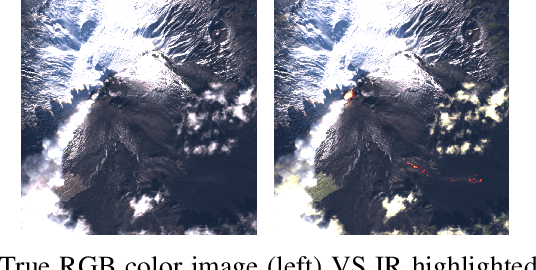
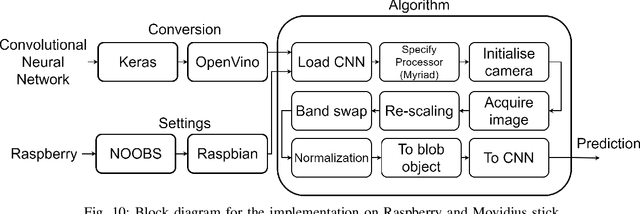

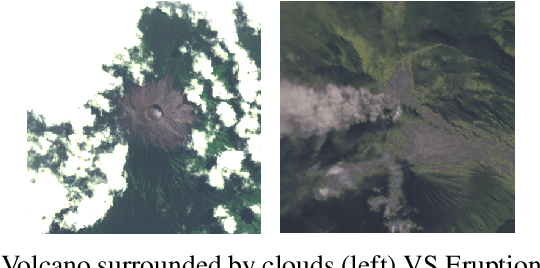
Abstract:In recent years, the growth of Machine Learning (ML) algorithms has raised the number of studies including their applicability in a variety of different scenarios. Among all, one of the hardest ones is the aerospace, due to its peculiar physical requirements. In this context, a feasibility study and a first prototype for an Artificial Intelligence (AI) model to be deployed on board satellites are presented in this work. As a case study, the detection of volcanic eruptions has been investigated as a method to swiftly produce alerts and allow immediate interventions. Two Convolutional Neural Networks (CNNs) have been proposed and designed, showing how to efficiently implement them for identifying the eruptions and at the same time adapting their complexity in order to fit on board requirements.
Sentinel-1 and Sentinel-2 Spatio-Temporal Data Fusion for Clouds Removal
Jun 23, 2021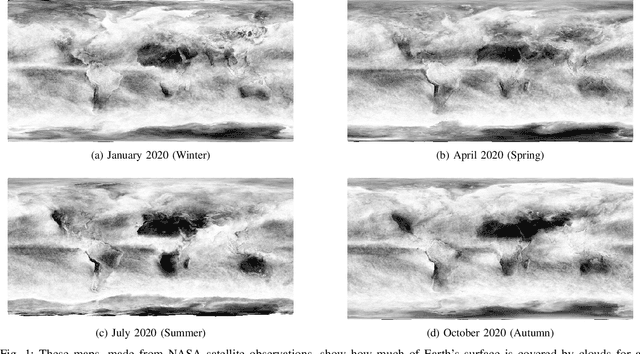
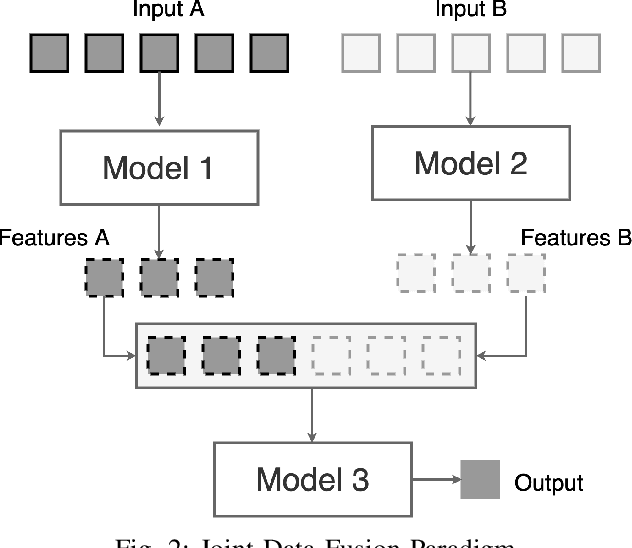
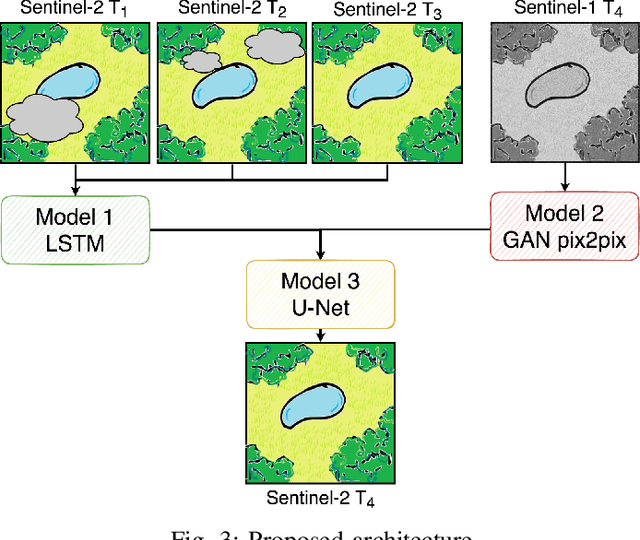
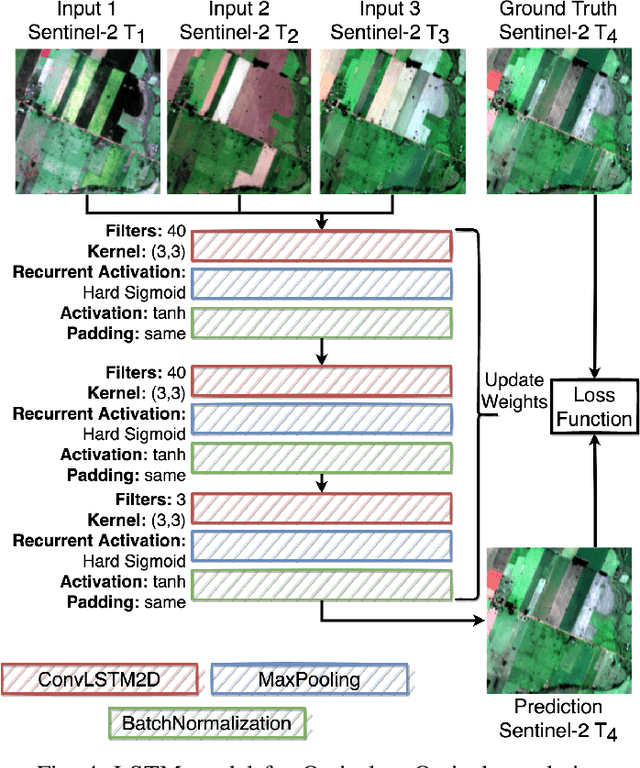
Abstract:The abundance of clouds, located both spatially and temporally, often makes remote sensing applications with optical images difficult or even impossible. In this manuscript, a novel method for clouds-corrupted optical image restoration has been presented and developed, based on a joint data fusion paradigm, where three deep neural networks have been combined in order to fuse spatio-temporal features extracted from Sentinel-1 and Sentinel-2 time-series of data. It is worth highlighting that both the code and the dataset have been implemented from scratch and made available to interested research for further analysis and investigation.
Paradigm selection for Data Fusion of SAR and Multispectral Sentinel data applied to Land-Cover Classification
Jun 18, 2021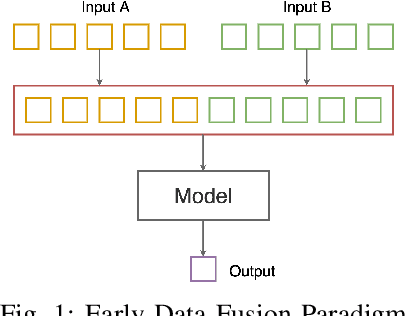
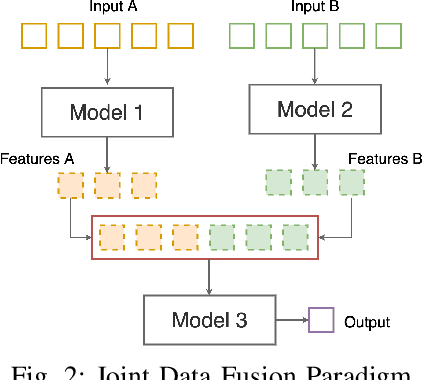
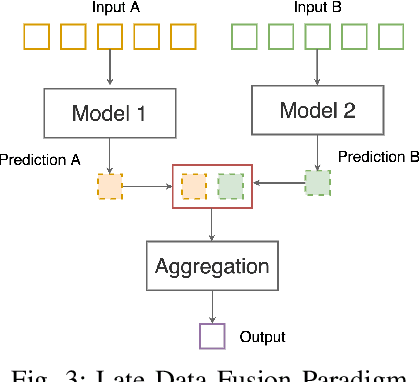
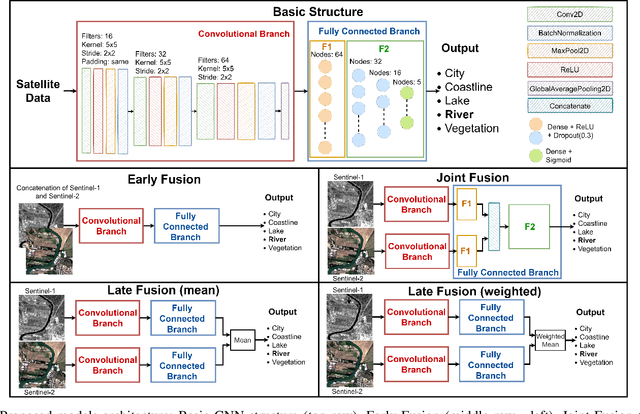
Abstract:Data fusion is a well-known technique, becoming more and more popular in the Artificial Intelligence for Earth Observation (AI4EO) domain mainly due to its ability of reinforcing AI4EO applications by combining multiple data sources and thus bringing better results. On the other hand, like other methods for satellite data analysis, data fusion itself is also benefiting and evolving thanks to the integration of Artificial Intelligence (AI). In this letter, four data fusion paradigms, based on Convolutional Neural Networks (CNNs), are analyzed and implemented. The goals are to provide a systematic procedure for choosing the best data fusion framework, resulting in the best classification results, once the basic structure for the CNN has been defined, and to help interested researchers in their work when data fusion applied to remote sensing is involved. The procedure has been validated for land-cover classification but it can be transferred to other cases.
A SAR speckle filter based on Residual Convolutional Neural Networks
Apr 19, 2021



Abstract:In recent years, Machine Learning (ML) algorithms have become widespread in all fields of Remote Sensing (RS) and Earth Observation (EO). This has allowed a rapid development of new procedures to solve problems affecting these sectors. In this context, the authors of this work aim to present a novel method for filtering the speckle noise from Sentinel-1 data by applying Deep Learning (DL) algorithms, based on Convolutional Neural Networks (CNNs). The obtained results, if compared with the state of the art, show a clear improvement in terms of Peak Signal-to-Noise Ratio (PSNR) and Structural Similarity Index ({SSIM}), by proving the effectiveness of the proposed architecture. Moreover, the generated open-source code and dataset have been made available for further developments and investigation by interested researchers.
 Add to Chrome
Add to Chrome Add to Firefox
Add to Firefox Add to Edge
Add to Edge